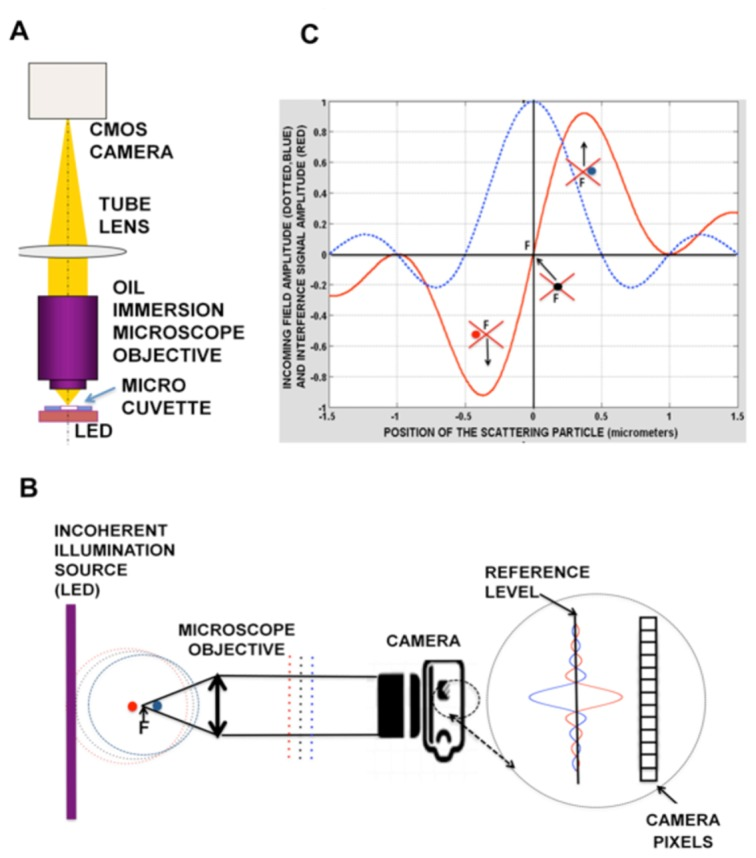Video drop
 (Scheme from [@boccara2016Full-field interferometry for counting and differentiating aquatic biotic nanoparticles: from laboratory to Tara Oceans])
(Scheme from [@boccara2016Full-field interferometry for counting and differentiating aquatic biotic nanoparticles: from laboratory to Tara Oceans])
It exploits an interferometric detection schemes using a non-coherent light source (an LED) that shines straight through the sample. The interference is created by particles in suspension and the light that went close to them. It sounds like a very smart exploit of having a point-spread function larger than the particles themselves.
According to the website, and some superficial discussion during a conference, the secret lays in the fact that the interference that is measured happens at a very specific plane in the sample (is this related to Köhler Illumination in any way?)
In the end, the measurement relies on a nanoparticle tracking analysis, where the largest advantage is that the direct intereference makes it easier to acquire, and in principle it detects particles which are weak scatterers. However, it still suffers from all the limitations of nanoparticle tracking analysis.
